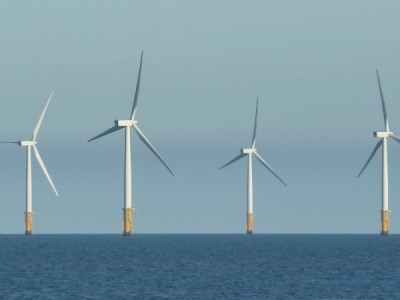
Posted on August 5, 2020
A piecemeal approach risks overloading electrical systems and tangle of deep sea cables.
In May of last year, a ring of explosives planted around the base of two 500-foot concrete cooling towers at what was once the largest coal-fired power plant in New England brought them down.
In 18 seconds, they were reduced to dust and gravel. Then in February, the plant’s four soot-encrusted chimneys were felled like brick trees.
The demolition of the Brayton Point Power Station was the stunning first act of a national energy drama playing out before the residents of Somerset, Mass. (population 17,896).
The second act—still unfolding slowly —- started with a proposal for the Anbaric Renewable Energy Center on the cleared site. It includes plans for a refurbished seaport, facilities for making and assembling parts of offshore wind turbines, and a state-of-the-art electric cable connection to bring in the electricity from multiple wind farms at sea.
It was the first in a series of transformations underway up and down the East Coast to support 16 offshore wind farms planned in seven states. Those efforts will cost an estimated $70 billion altogether. They are part of still larger plans to eventually shift both U.S. coastlines to offshore wind and other clean energy sources.
The offshore energy resource in the United States is huge, but federal plans to develop it remain a puzzle with large gaps. Left unfinished are regulations for the nascent industry. Other problems to be worked out include the infrastructure that will be used to connect the turbines to the nation’s electric power grids.
Source: coastalnewstoday





